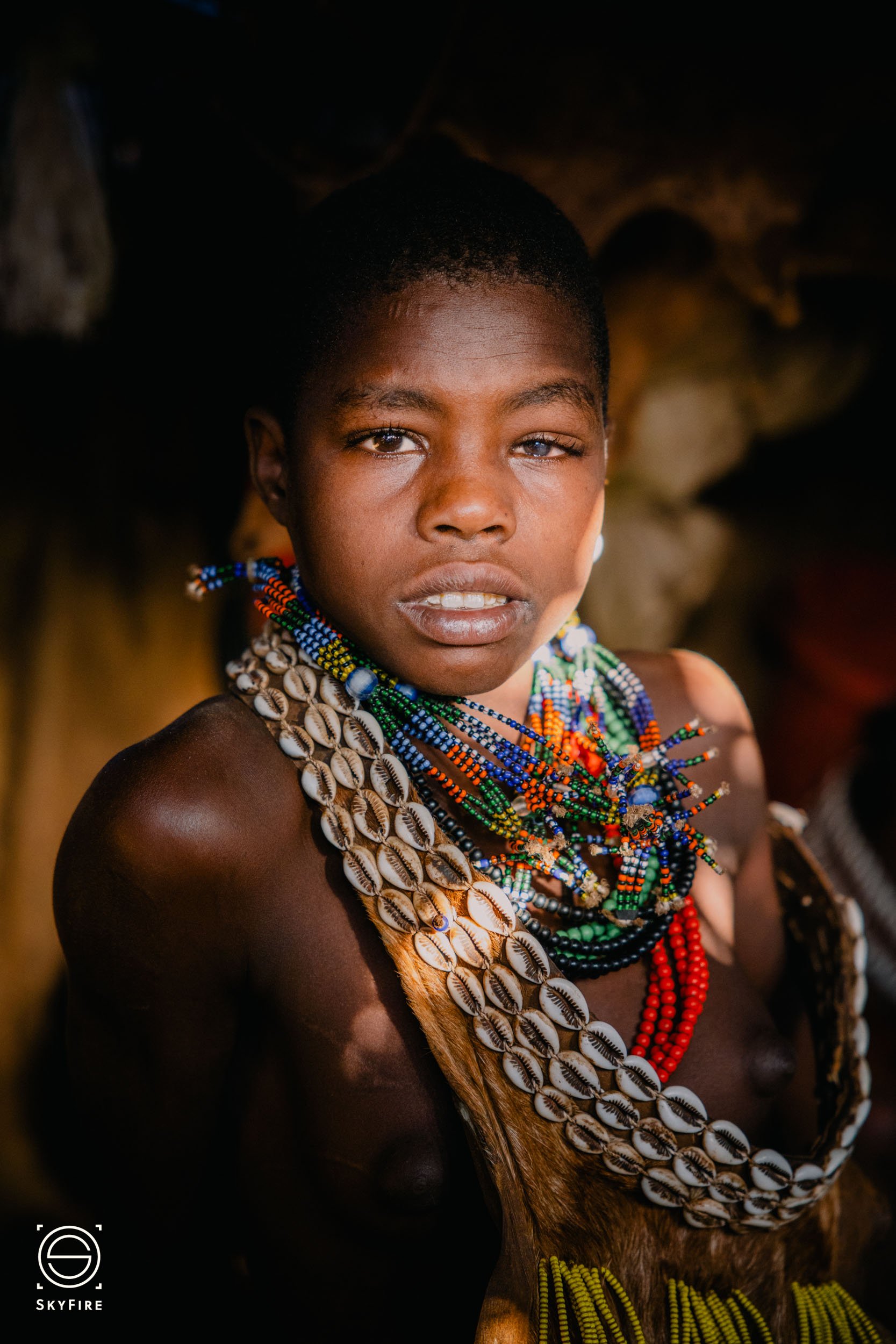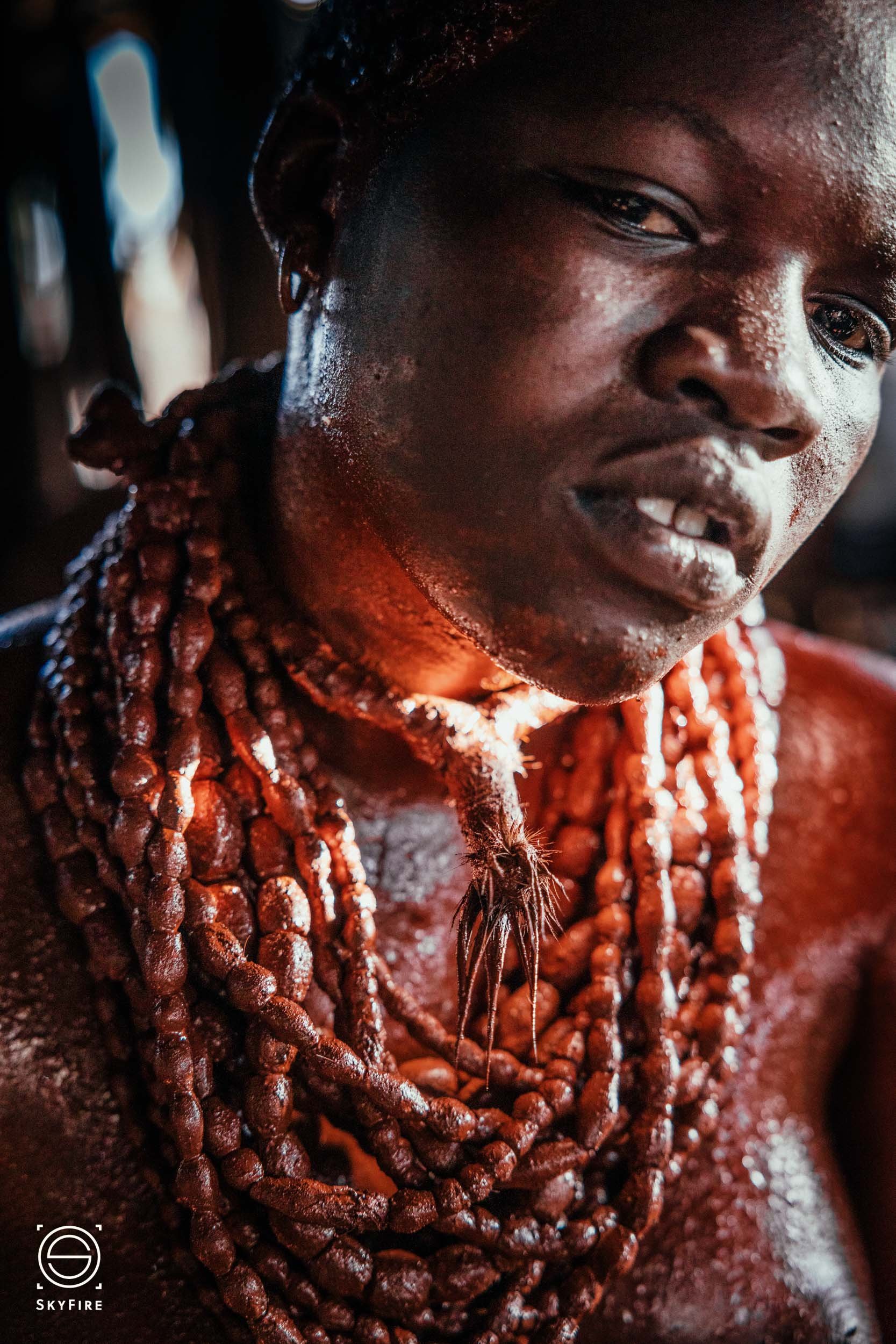Hamer
Hello: nagaiyo
We visited the Hamer (or Hamar) village of Lojira just a few kilometres outside the small town of Turmi in Southern Ethiopia. There were about 600 people living there and being pastoralists, cattle is life for the Hamer. They stay in one spot as long as there is enough grass for their herds and move on to new pastures when the food is gone. The Hamer do basic farming, sowing sorghum at the start of the wet season, but as they’re nomadic, they tend to leave their crops unattended and so don’t get much from them.
The women have distinctive hairstyles, covering their bobs in thick ochre. Being polygamous, one of the most unique features we saw was their system for denoting which number wife they are. The first wife wears a thick necklace made of dik-dik leather and clasped at the front with a metal fastener. If the man takes a second wife, the second wife wears a heavy metal necklace to denote that she is wife number 2 and the first wife puts on a similar metal necklace, now showing that she is the first of 2 and so on. Hamer men can marry 3-4 women and the number of wives, as is the case with almost every polygamous tribe we saw, is determined by the number of cattle that a man has and can afford to pay as a dowry.
It was fascinating to see that a Hamer man’s first wife is chosen by the parents whereas the second wife will often by chosen by the first.













